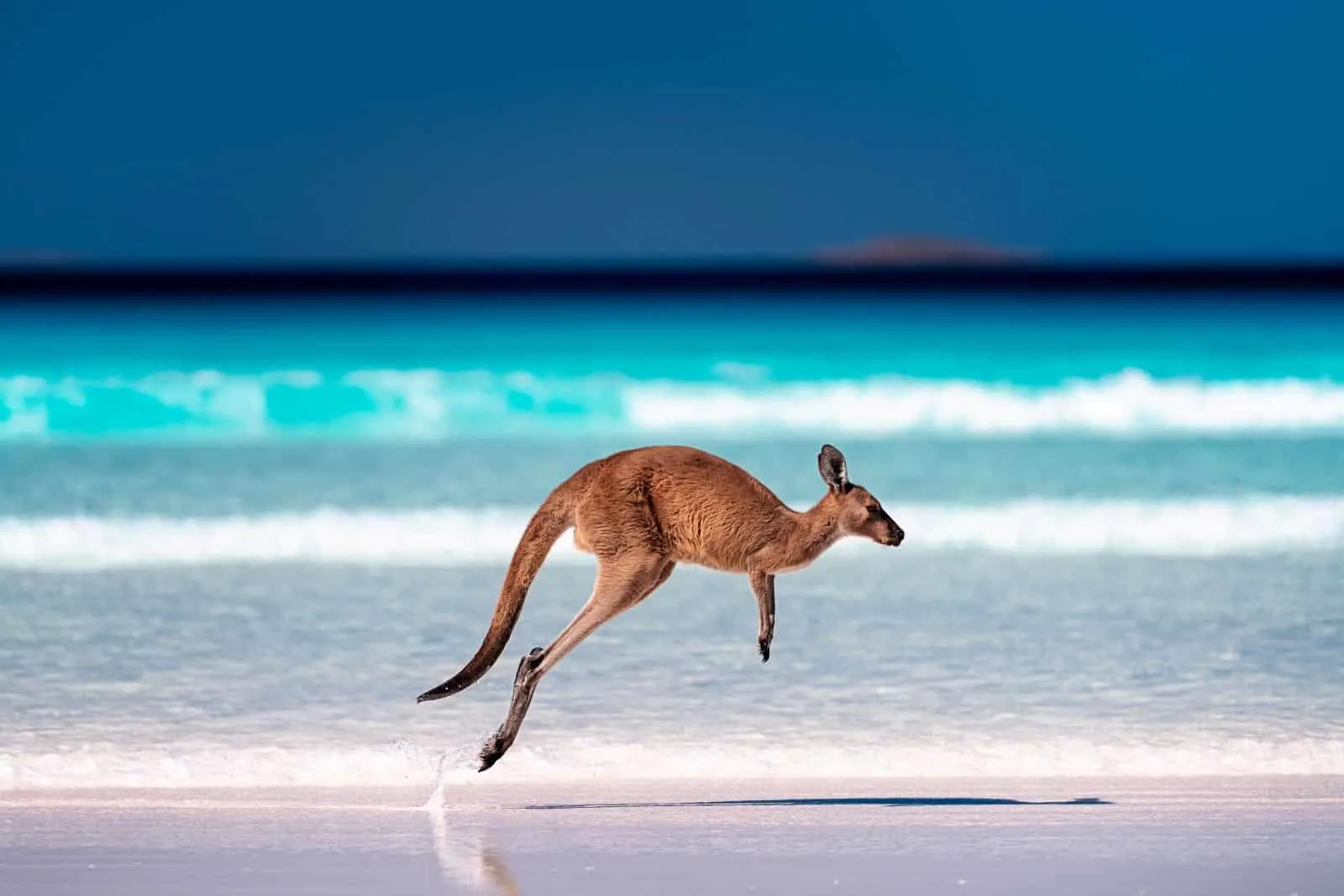Australia’s appeal lies in its diverse landscapes and rich Indigenous cultures, dynamic cities, and laid-back lifestyle. The country’s vastness offers something for every type of traveler, from the sun-soaked beaches along its coastline to the rugged Outback that defines its heartland. This guide navigates through Australia’s must-visit destinations, uncovering the beauty of the land Down Under and ensuring travelers make the most of their journey across this extraordinary continent.
1. Sydney Opera House and Harbour Bridge
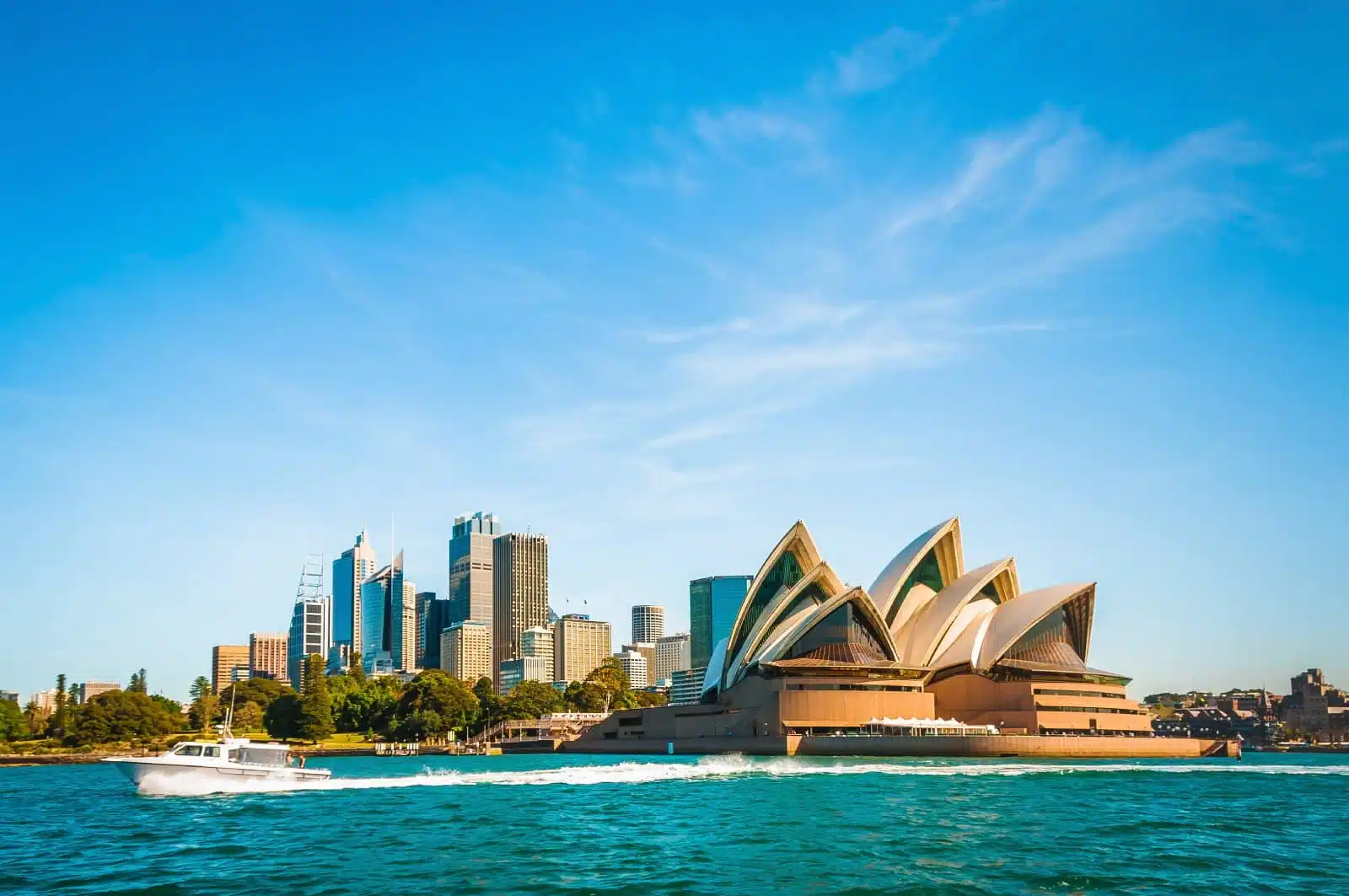
Image Credit: Shutterstock / Iris Sokolovskaya
The Sydney Opera House, with its iconic white sails, and the Harbour Bridge, affectionately known as “The Coathanger,” are symbols of Australia’s inventive spirit and architectural brilliance. Situated in Sydney Harbour, these landmarks are not just feats of engineering but also cultural and social activity hubs. Visitors can enjoy performances at the Opera House, ranging from opera to contemporary music, and embark on a climb of the Harbour Bridge for panoramic views of the city and beyond. The area surrounding the harbor is vibrant, with waterfront restaurants, parks, and museums that offer a glimpse into Sydney’s soul.
Insider’s Tip: For an unforgettable experience, book a twilight climb of the Harbour Bridge or a behind-the-scenes tour of the Opera House to see these iconic structures in a new light.
When to Travel: Sydney’s temperate climate makes it a great destination year-round, but visiting in the Australian spring (September to November) or autumn (March to May) offers pleasant weather and smaller crowds.
How to Get There: Both landmarks are located in Sydney’s city center, easily accessible by public transport, including ferries, trains, and buses.
2. Great Barrier Reef, Queensland
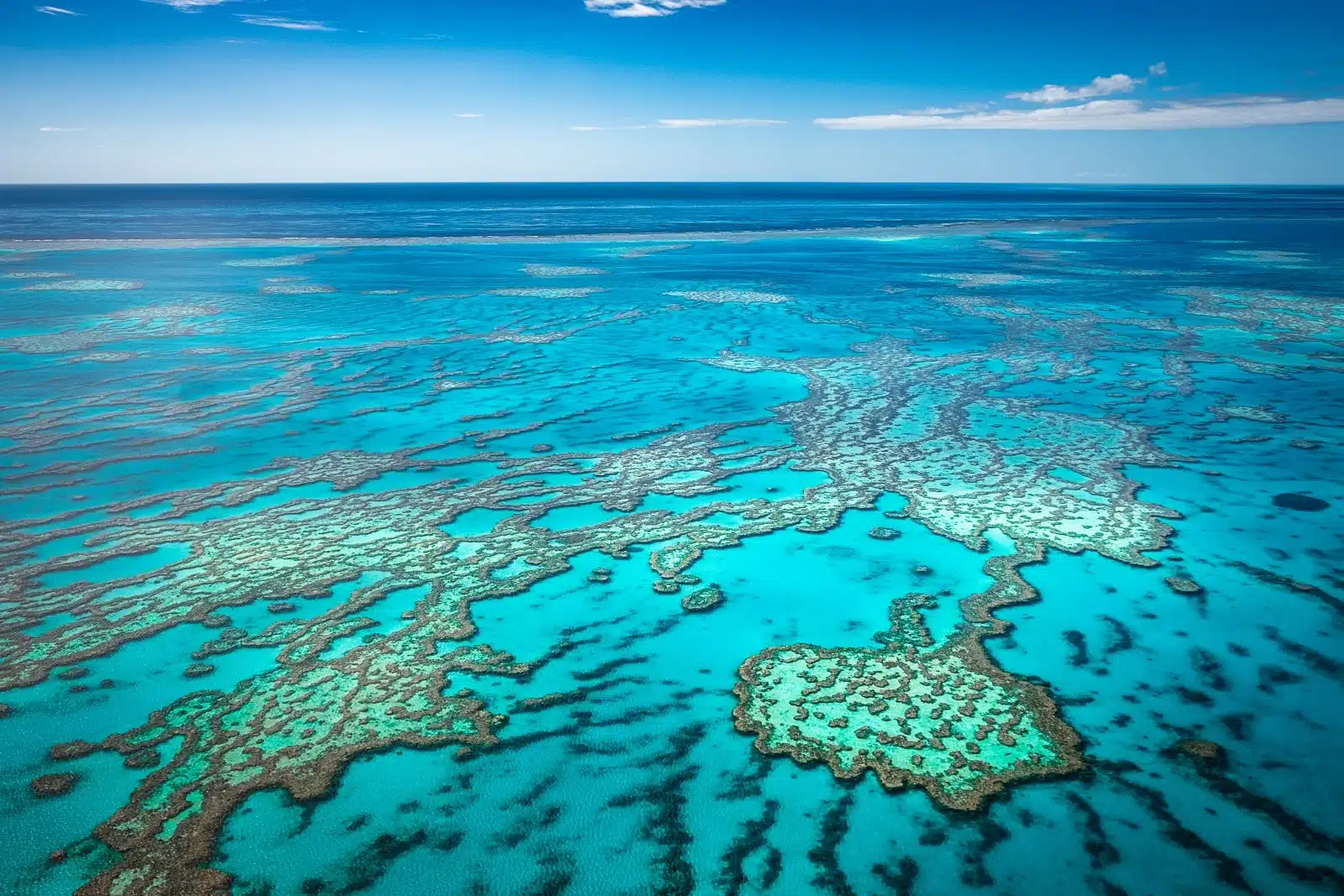
Image Credit: Shutterstock / I Shafiq
The Great Barrier Reef, the world’s largest coral reef system, is a marine wonderland that stretches over 2,300 kilometers along the Queensland coast. This UNESCO World Heritage site is home to thousands of species of marine life, including colorful coral, fish, turtles, sharks, and dolphins. Visitors can explore the reef through snorkeling, diving, glass-bottom boat tours, and scenic flights, each offering a different perspective on this natural marvel. The reef is a biodiversity hotspot and a critical barometer for the health of our planet’s oceans.
Insider’s Tip: For an immersive experience, consider staying on one of the reef’s islands or booking a liveaboard diving trip, which allows for early morning and night dives when the reef is most active.
When to Travel: The best time to visit the Great Barrier Reef is from June to October when the weather is mild and underwater visibility is at its best.
How to Get There: Cairns and Port Douglas are popular gateways to the Great Barrier Reef, with numerous tour operators offering excursions to various parts of the reef.
3. Uluru-Kata Tjuta National Park, Northern Territory
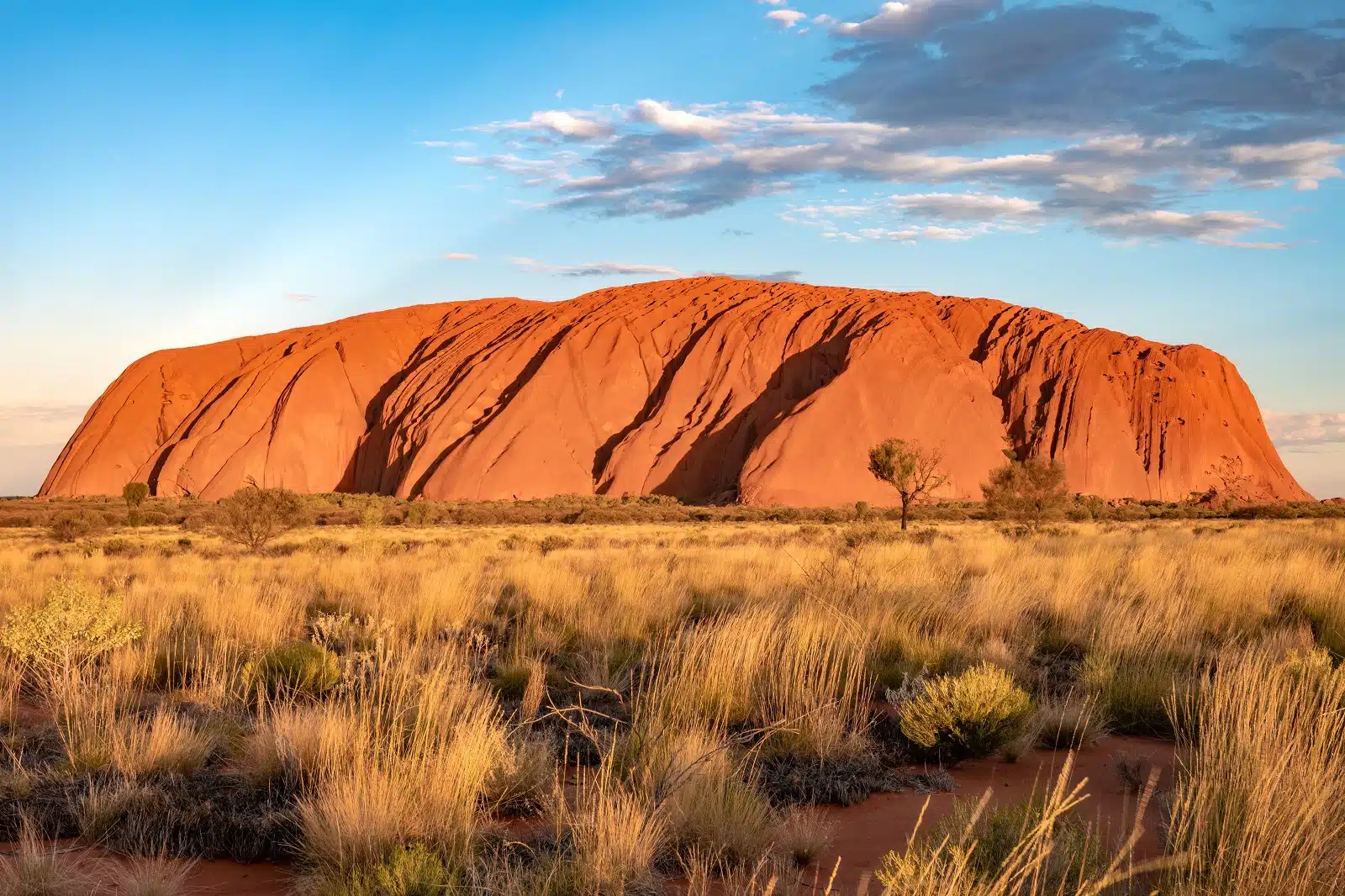
Image Credit: Shutterstock / LouieLea
Uluru (Ayers Rock) and Kata Tjuta (The Olgas) are Australia’s most iconic natural landmarks in the heart of the Red Centre. Uluru, a massive sandstone monolith, holds deep spiritual significance for the Anangu, the traditional Aboriginal owners of the land. Kata Tjuta, a group of large domed rock formations, offers equally breathtaking landscapes. Visitors can explore the cultural center to learn about Aboriginal culture and history, take guided walks around the sites, and witness the spectacular colors of Uluru at sunrise and sunset.
Insider’s Tip: Respect the wishes of the Anangu by not climbing Uluru. Instead, take part in a guided base walk or a camel tour around the rock for a respectful and enriching experience.
When to Travel: The cooler months of May to September offer more comfortable temperatures for exploring the national park.
How to Get There: The nearest major town is Alice Springs, with direct flights from major Australian cities. From Alice Springs, Uluru is accessible by car or tour bus, a scenic drive of around 4.5 hours.
4. The Great Ocean Road, Victoria
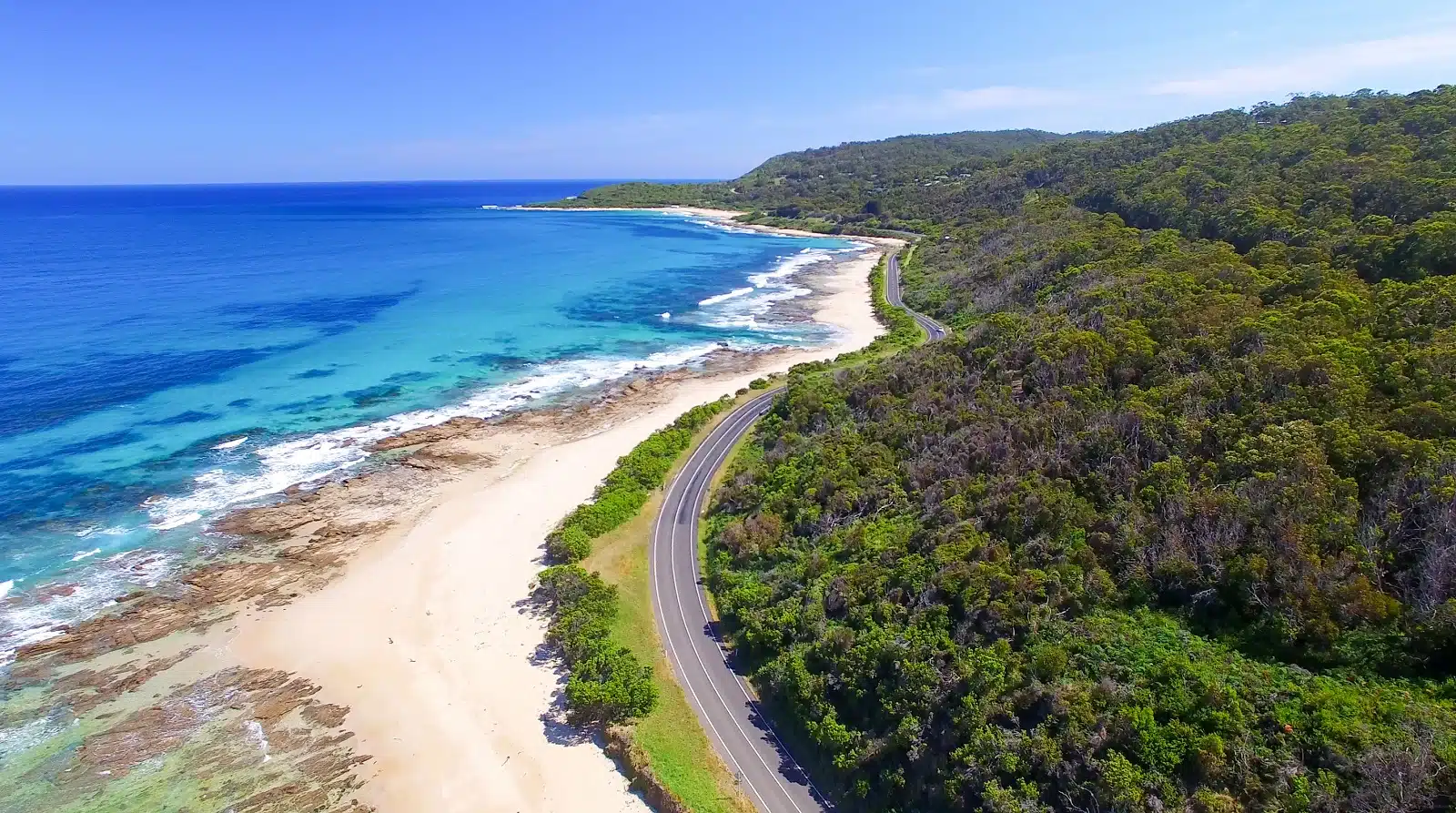
Image Credit: Shutterstock / pisaphotography
The Great Ocean Road is a spectacular coastal drive in Victoria, stretching 243 kilometers from Torquay to Allansford. The route is famed for its dramatic scenery, including the Twelve Apostles limestone stacks, rainforests, and beaches. Visitors can explore charming seaside towns, national parks, and iconic surf spots along the way. The road also offers opportunities for whale watching, rainforest walks, and discovering the region’s rich maritime history.
Insider’s Tip: Take your time exploring the Great Ocean Road over several days, staying in coastal towns like Lorne or Apollo Bay to experience local hospitality and fresh seafood.
When to Travel: While the road can be driven year-round, spring (September to November) and autumn (March to May) offer milder weather and fewer crowds.
How to Get There:The Great Ocean Road is easily accessible from Melbourne by car or tour bus, with the journey to the starting point in Torquay taking about 1.5 hours.
5. Kakadu National Park, Northern Territory
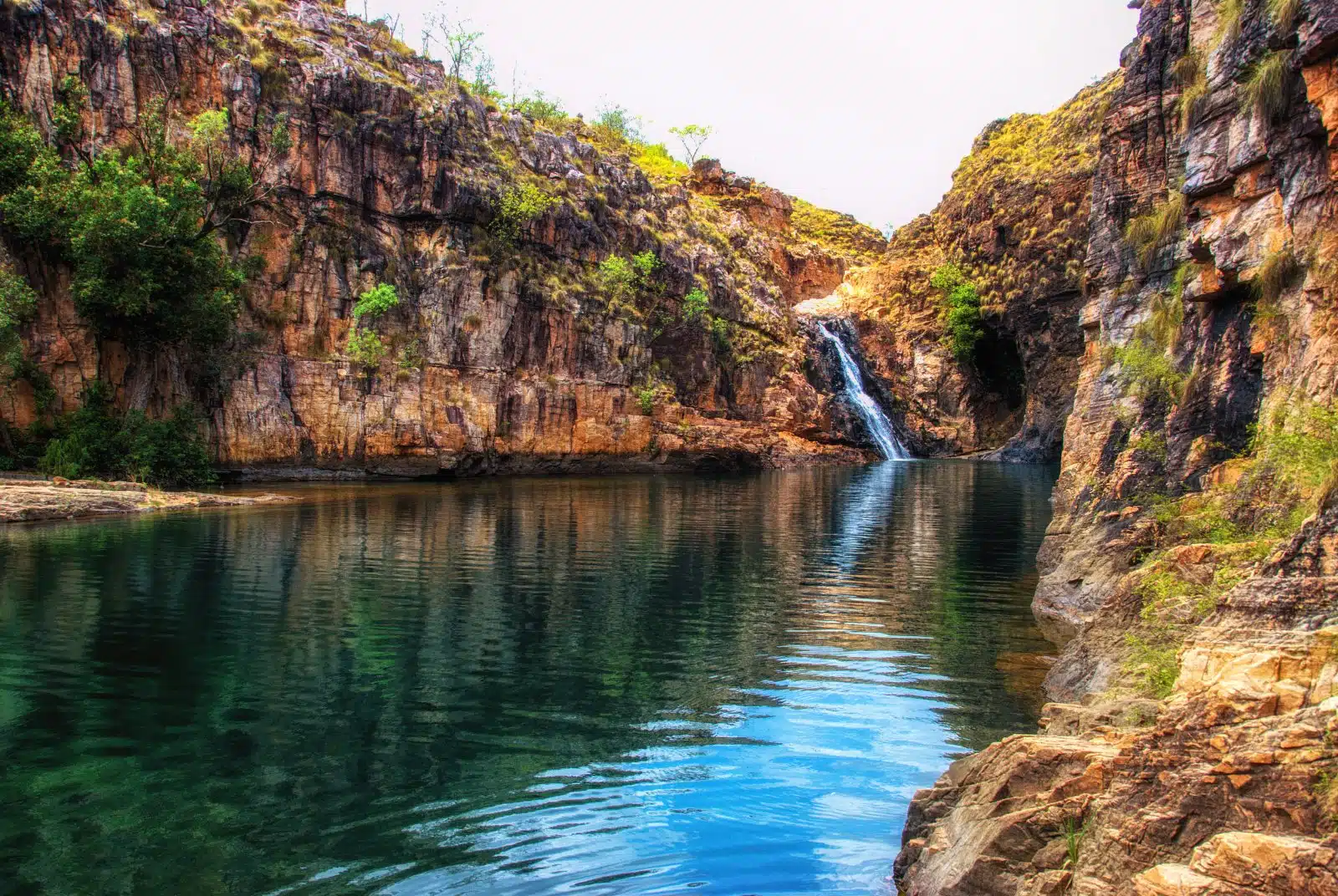
Image Credit: Shutterstock / Atosan
Kakadu National Park, Australia’s largest national park, is a UNESCO World Heritage site renowned for its ecological diversity and rich Indigenous culture. The park’s landscape encompasses wetlands, rivers, sandstone escarpments, and waterfalls, providing habitats for a vast array of wildlife. Kakadu is also home to one of the world’s greatest concentrations of rock art sites, with paintings dating back over 20,000 years. Visitors can take guided tours to learn about the park’s natural and cultural heritage, go birdwatching, or cruise the Yellow Water Billabong.
Insider’s Tip: To fully appreciate Kakadu’s cultural significance, join a tour led by Indigenous guides who share stories and knowledge passed down through generations.
When to Travel: The dry season (May to October) is the best time to visit, as cooler temperatures and reduced humidity make exploring more comfortable, and access to all areas of the park is more likely.
How to Get There: Kakadu National Park is approximately a three-hour drive from Darwin. Rental cars and organized tours are available from Darwin, providing flexible options for visiting the park.
6. Lord Howe Island
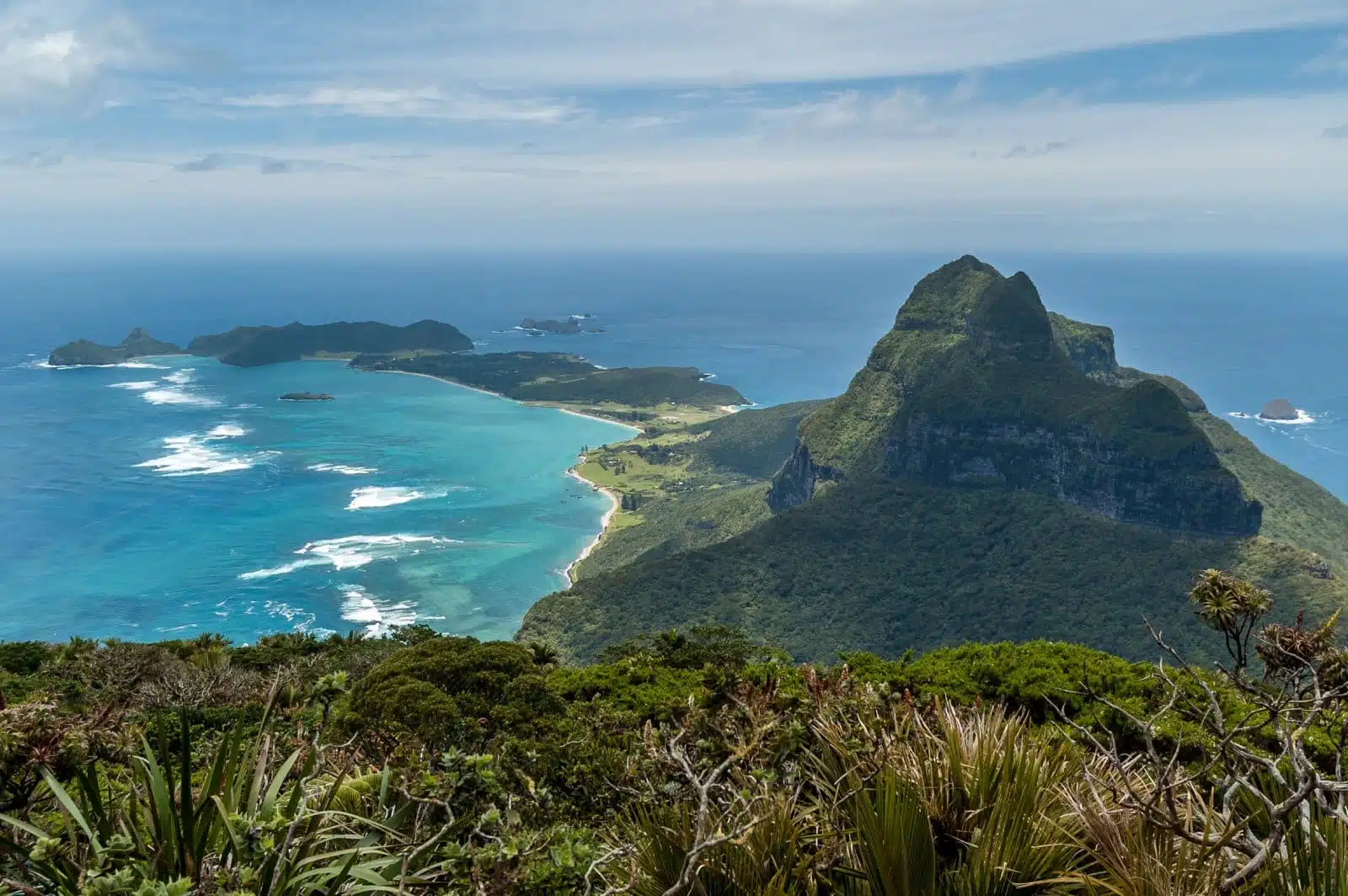
Image Credit: Shutterstock / Steve Todd
Lord Howe Island, a UNESCO World Heritage-listed paradise in the Tasman Sea, is an idyllic escape known for its stunning natural beauty, unique biodiversity, and tranquil atmosphere. The island limits visitor numbers to protect its ecosystems, offering an exclusive experience of pristine beaches, coral reefs, and lush rainforests. Activities include hiking Mount Gower, snorkeling in the lagoon, and bird watching. The island’s commitment to conservation ensures a pristine environment for exploring its natural wonders.
Insider’s Tip: Try hand-feeding fish at Ned’s Beach, where visitors can interact closely with a variety of marine species in crystal-clear waters.
When to Travel: The island enjoys a mild subtropical climate year-round, but the best time for outdoor activities is during the warmer months from September to May.
How to Get There: Lord Howe Island is accessible by a two-hour flight from Sydney or Brisbane, with a limited number of flights each week to maintain its low-impact tourism model.
7. Tasmania’s Wilderness World Heritage Area
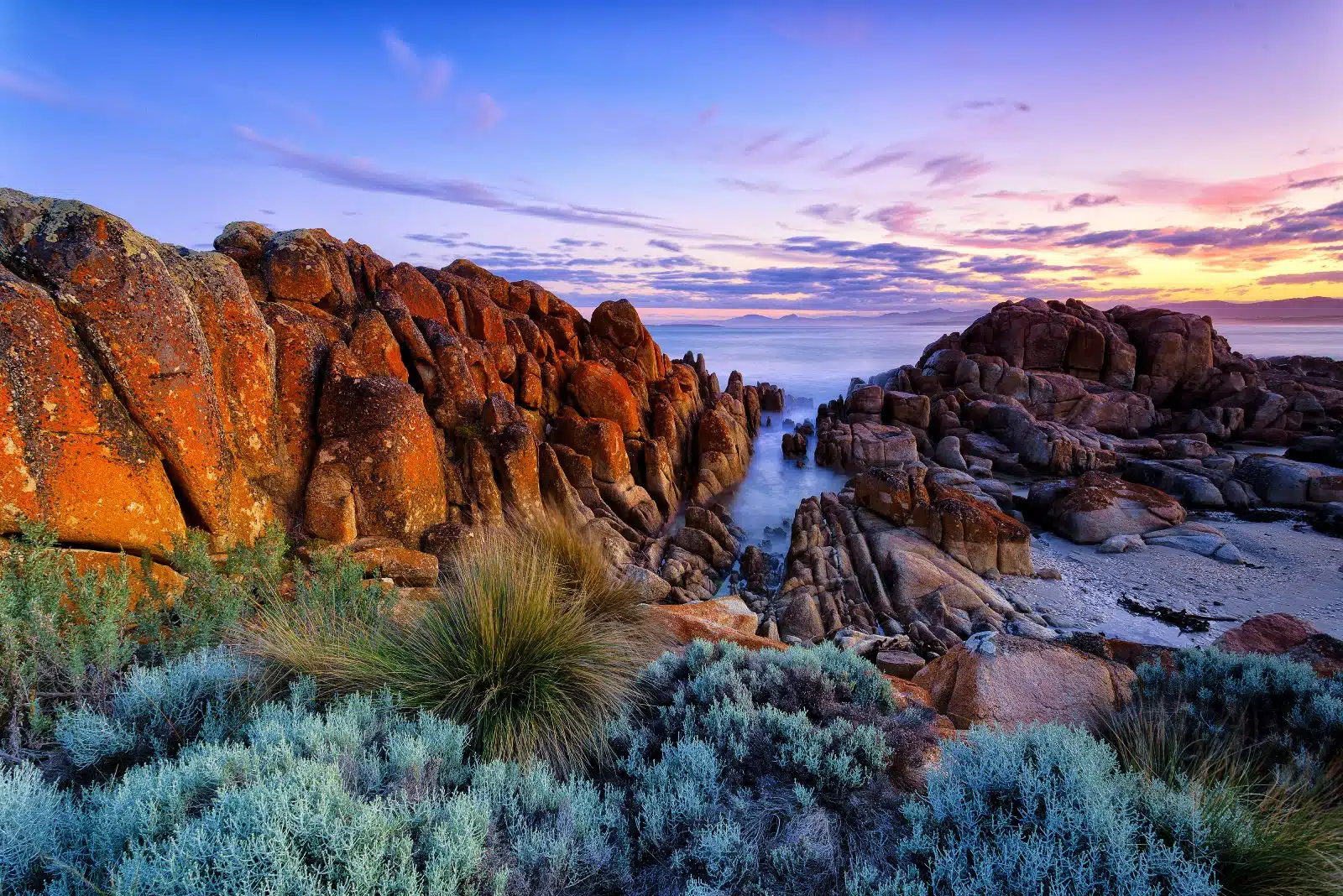
Image Credit: Shutterstock / Visual Collective
Tasmania, an island state off Australia’s south coast, is famed for its vast, unspoiled wilderness areas, encompassing rainforests, mountains, and white-sand beaches. Over one-third of the island is protected as national parks and reserves, including the UNESCO-listed Tasmanian Wilderness World Heritage Area. Highlights include the rugged beauty of Cradle Mountain-Lake St Clair National Park, the pristine beaches of Freycinet National Park, and the ancient rainforests of the Tarkine. Tasmania also offers a rich cultural experience, with a thriving arts scene, colonial history, and a focus on gourmet food and wine.
Insider’s Tip: Embark on the Overland Track, a world-renowned multi-day hike that offers an immersive experience in Tasmania’s stunning wilderness, but be sure to book your permit in advance during the hiking season.
When to Travel: The best time to explore Tasmania’s Wilderness World Heritage Area is during the Australian summer (December to February), when the weather is more favorable for outdoor activities.
How to Get There: The area is accessible from Hobart or Launceston, with both cities offering car rentals and tour options to explore the wilderness. Some remote locations may require a small plane or boat journey.
8. Margaret River, Western Australia
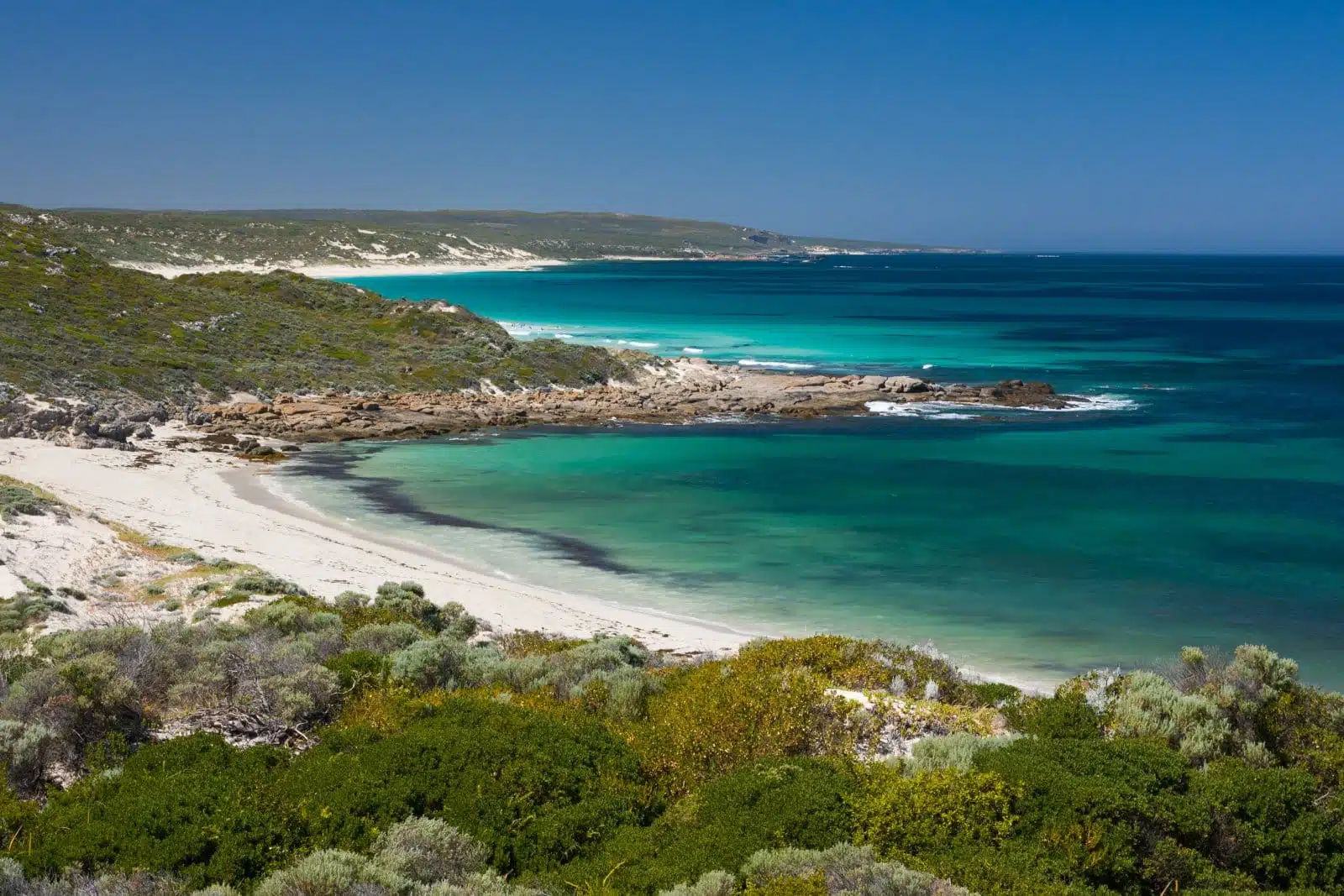
Image Credit: Shutterstock / FiledIMAGE
Margaret River is renowned for its premium wineries, stunning beaches, and surf breaks. Located in the southwest corner of Australia, this region combines the joys of gourmet food and wine with the natural beauty of ancient forests and coastal scenery. Visitors can indulge in wine tastings at world-class vineyards, explore limestone caves, hike coastal trails, and enjoy the region’s laid-back lifestyle. Margaret River also hosts various cultural events throughout the year, including food and wine festivals celebrating its culinary excellence.
Insider’s Tip: Visit during the annual Margaret River Pro surf competition to watch some of the world’s best surfers in action, or plan your trip during the Gourmet Escape festival for an extraordinary gastronomic experience.
When to Travel: The region is beautiful year-round, but spring (September to November) is ideal for wildflower blooms and cooler temperatures perfect for exploring the outdoors.
How to Get There: Margaret River is about a three-hour drive south of Perth. Renting a car is the best way to explore the region at your own pace, allowing for stops at vineyards and beaches along the way.
9. The Daintree Rainforest, Queensland
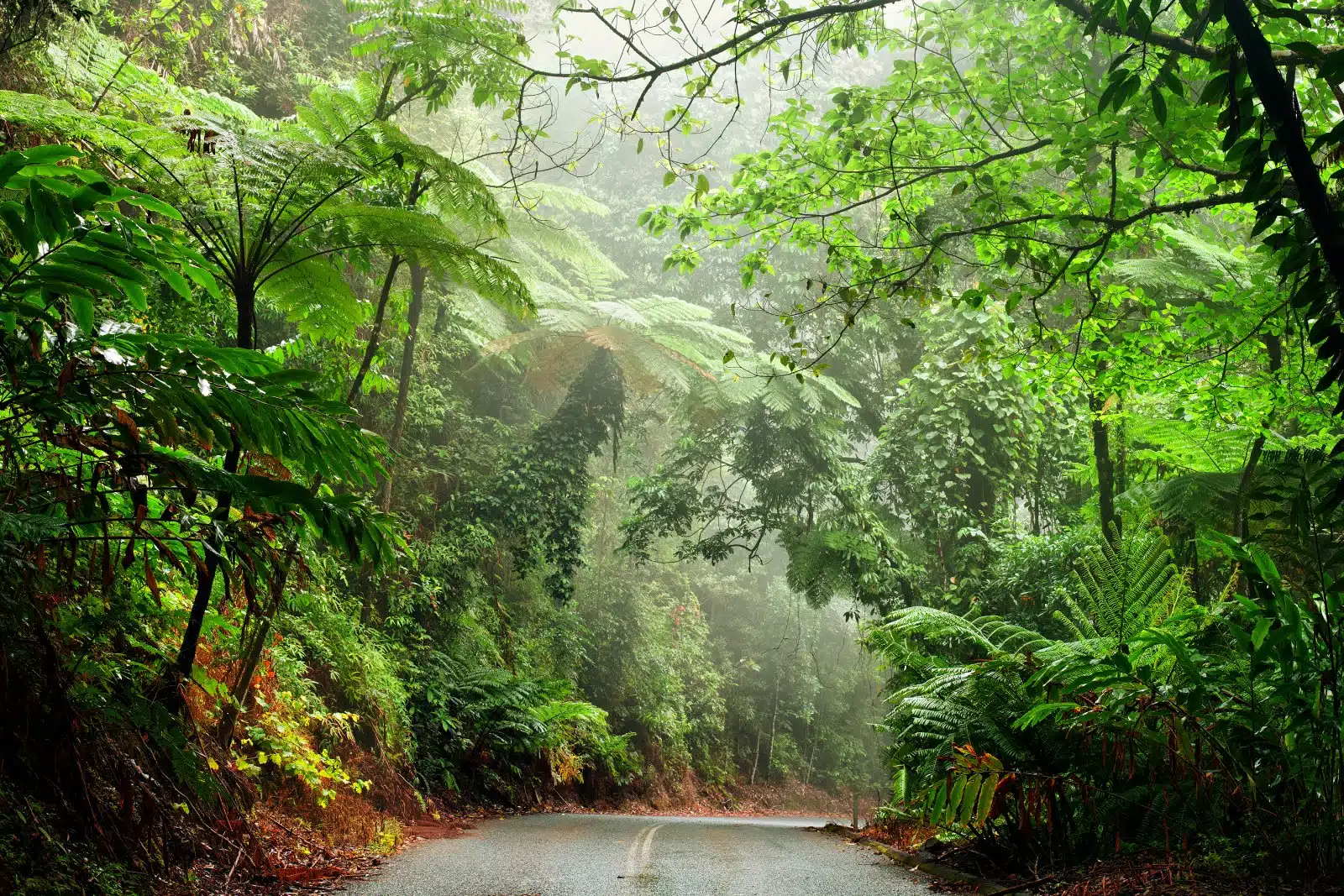
Image Credit: Shutterstock / AustralianCamera
The Daintree Rainforest, part of the Wet Tropics World Heritage Area, is the oldest surviving tropical rainforest in the world. Located in Far North Queensland, this ancient rainforest meets the Great Barrier Reef, one of the only places on earth where two World Heritage sites exist side by side. Visitors can explore the forest through guided walks, river cruises, and canopy tours, discovering its rich biodiversity, including unique flora and fauna like the cassowary. The Daintree is also a place of significant cultural importance to the local Indigenous people, offering insights into their traditions and connection to the land.
Insider’s Tip: Stay in eco-friendly accommodation to minimize your impact on the environment and enhance your experience of the rainforest’s natural beauty.
When to Travel: The cooler, drier months from May to September are the most comfortable for exploring the Daintree, avoiding the heavy rains and high humidity of the wet season.
How to Get There: The Daintree is about a two-hour drive north of Cairns. Visitors can rent a car in Cairns or join an organized tour that includes transportation to the rainforest.
10. Kangaroo Island, South Australia
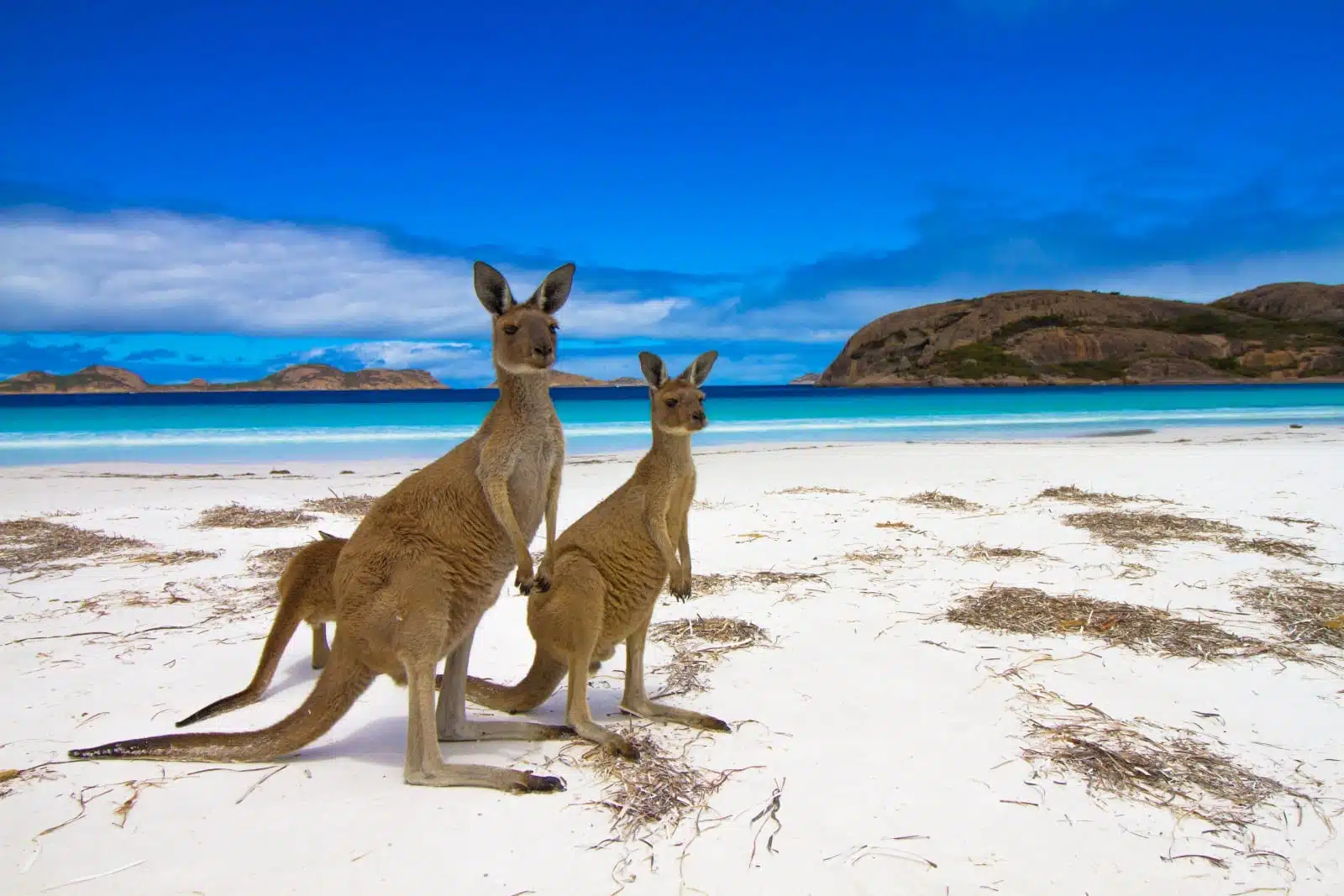
Image Credit: Shutterstock / LIBIN THOMAS OLAPRATH
Kangaroo Island, off the coast of South Australia, is a wildlife sanctuary known for its pristine beaches, rugged coastal landscapes, and diverse wildlife, including kangaroos, koalas, and a variety of bird species. The island offers a range of outdoor activities, such as hiking in Flinders Chase National Park, sandboarding at Little Sahara, and exploring Remarkable Rocks and Admirals Arch. Kangaroo Island is also committed to conservation efforts, with several wildlife sanctuaries and rehabilitation centers that visitors can support.
Insider’s Tip: Participate in a nocturnal wildlife tour for the opportunity to see some of the island’s more elusive creatures, such as echidnas, possums, and penguins.
When to Travel: Summer (December to February) is perfect for enjoying the island’s beaches, but spring (September to November) and autumn (March to May) offer milder weather for hiking and wildlife watching.
How to Get There: Kangaroo Island is accessible by ferry from Cape Jervis (a 2-hour drive from Adelaide) or by flight from Adelaide to Kingscote Airport on the island.
11. The Whitsunday Islands, Queensland
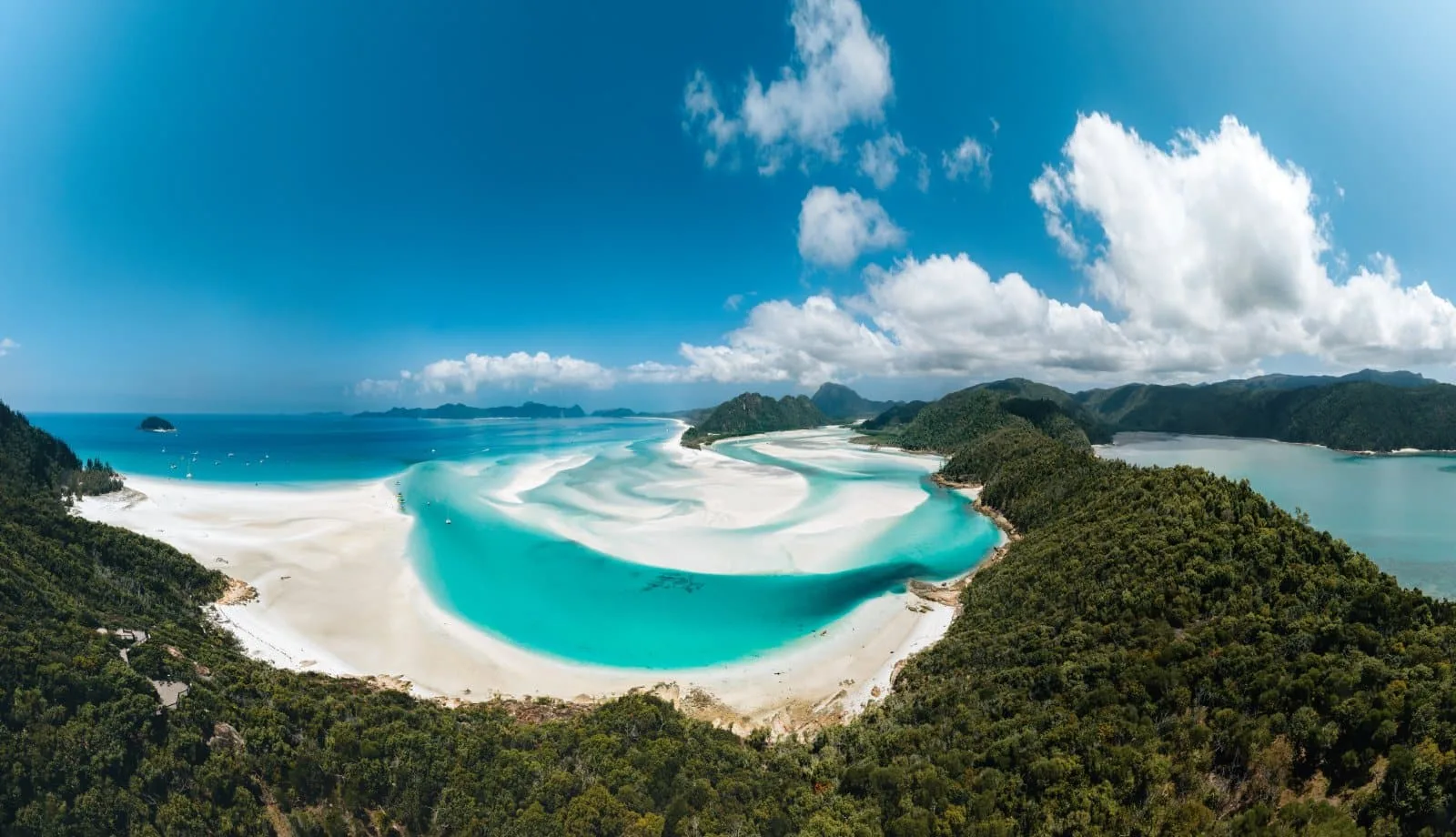
Image Credit: Shutterstock / Mathias Berlin
Nestled in the heart of the Great Barrier Reef, the Whitsunday Islands are a collection of 74 idyllic islands offering some of the world’s most beautiful beaches, including the famed Whitehaven Beach. The Whitsundays are a paradise for sailing, snorkeling, and diving, with crystal-clear waters and abundant marine life. Visitors can explore the islands through day trips, overnight sailing adventures, or by staying on one of the few inhabited islands. The region is a hub for aquatic activities and a gateway to the Great Barrier Reef, providing opportunities for coral viewing and underwater photography.
Insider’s Tip: Consider a scenic flight over the Great Barrier Reef and the Whitsunday Islands for a breathtaking aerial view of Heart Reef and the stunning turquoise waters.
When to Travel: The best time to visit the Whitsundays is during the dry season from May to September when the weather is pleasant, and the water visibility is high for snorkeling and diving.
How to Get There: The Whitsunday Islands are most commonly accessed from Airlie Beach on the mainland, with ferries, private boats, and seaplanes offering transport to the islands. Hamilton Island also has its own airport, receiving flights from major Australian cities.
12. The Kimberley, Western Australia

Image Credit: Shutterstock / robert mcgillivray
The Kimberley is one of the world’s last great wilderness areas, located in the northern part of Western Australia. This vast region is known for its dramatic landscapes, including ancient gorges, sprawling cattle stations, unique rock formations like the Bungle Bungles (Purnululu National Park), and cascading waterfalls like Mitchell Falls. The Kimberley is also rich in Aboriginal culture, with numerous sites featuring ancient rock art. The Kimberley can be explored by 4WD, cruising along the rugged coastline, or taking scenic flights, offering different perspectives of this breathtakingly untouched landscape.
Insider’s Tip: For a truly immersive experience, consider a guided tour led by Indigenous locals. Such tours offer invaluable insights into the region’s cultural significance and natural wonders.
When to Travel: The dry season from May to October is the best time to visit the Kimberley when roads are passable and the weather is more conducive to exploration.
How to Get There: The Kimberley is accessible via the towns of Broome and Kununurra, which have airports serviced by flights from Perth and other major Australian cities. Organized tours from these airports can take you deep into the region’s heart.
13. Byron Bay, New South Wales
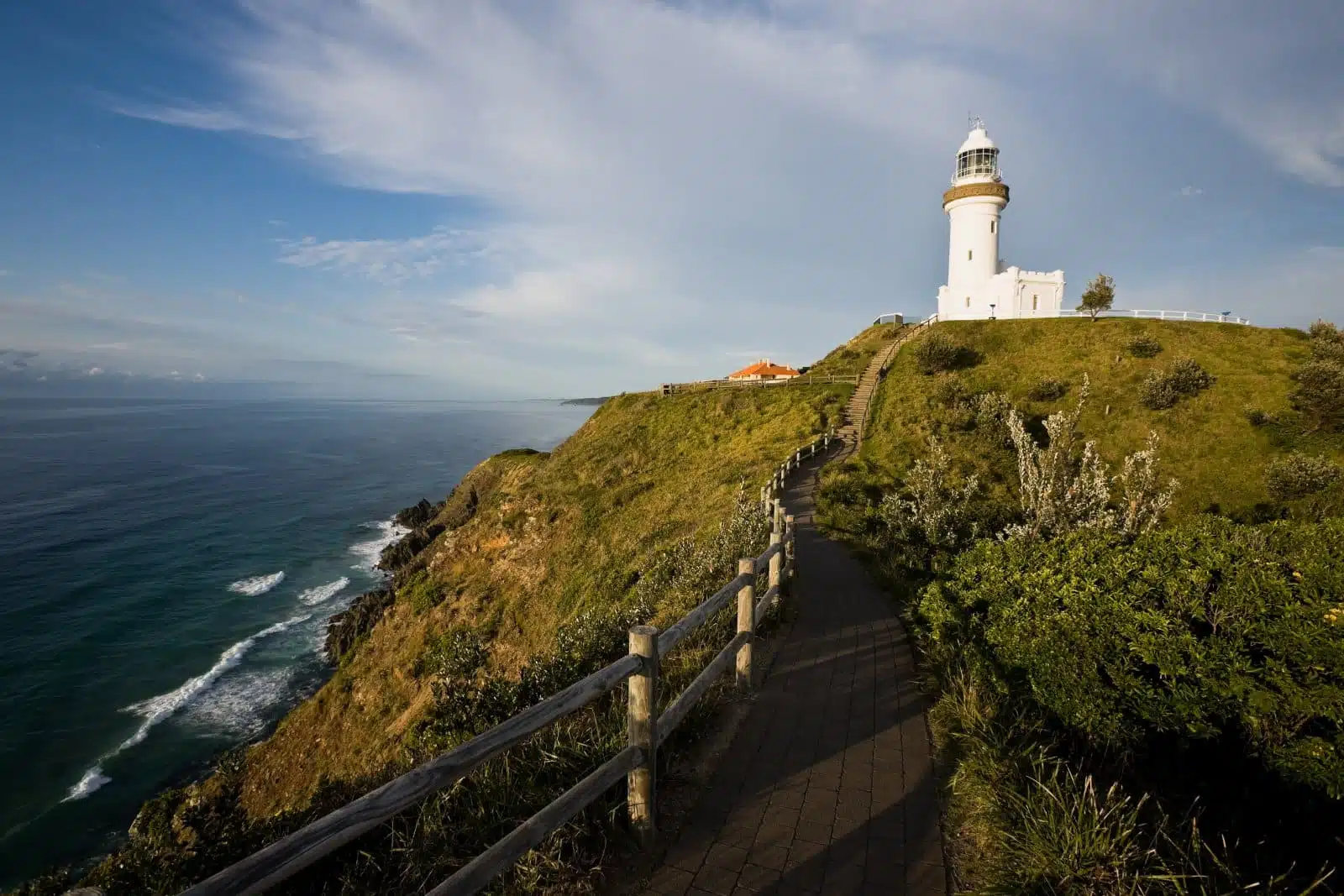
Image Credit: Shutterstock / John White Photos
Byron Bay is a coastal town in New South Wales, famous for its stunning beaches, surf spots, and laid-back lifestyle. It’s a magnet for those seeking a blend of natural beauty, vibrant arts scene, and alternative living. The town is surrounded by lush rainforests and coastal walks, including the iconic Cape Byron walking track, leading to the most easterly point of the Australian mainland and the historic Cape Byron Lighthouse. Byron Bay is also known for its wellness and spiritual retreats, offering a range of experiences from yoga and meditation to holistic therapies.
Insider’s Tip: Visit the Byron Bay Farmers Market, held every Thursday morning, to sample local produce and products, showcasing the region’s rich culinary culture and commitment to sustainability.
When to Travel: While Byron Bay is a year-round destination, the months of March to May offer pleasant weather, fewer crowds, and the chance to witness the migration of humpback whales.
How to Get There: Byron Bay is about a 2-hour drive south of Brisbane. The nearest airport is Ballina Byron Gateway Airport, with shuttle services available to Byron Bay.
14. The Barossa Valley, South Australia
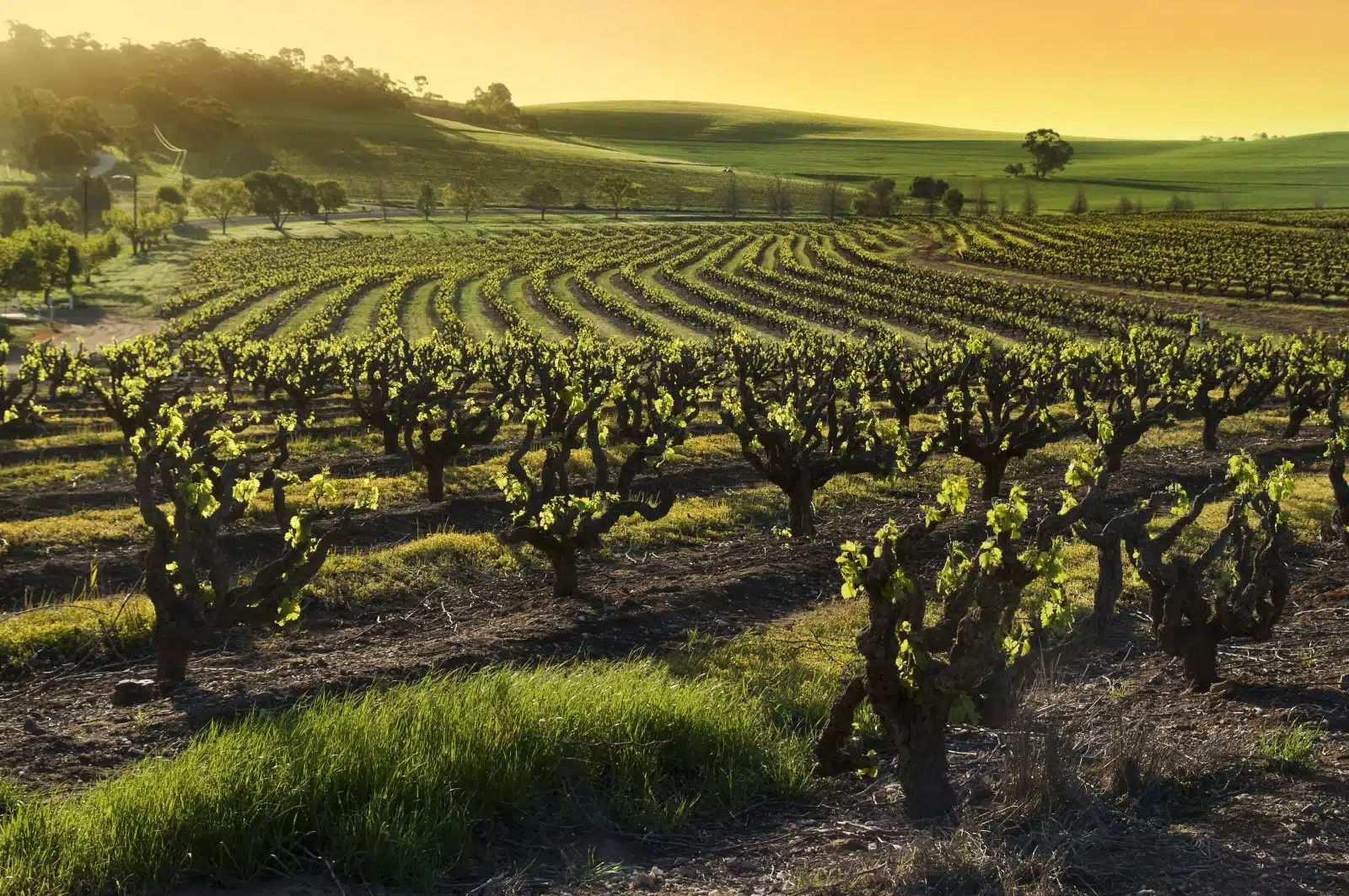
Image Credit: Shutterstock / hddigital
The Barossa Valley, just an hour’s drive from Adelaide, is one of Australia’s oldest and most renowned wine regions. Home to over 150 wineries and cellar doors, the area is celebrated for its Shiraz, among other varietals. The Barossa Valley combines its wine heritage with a burgeoning food scene, featuring farm-to-table dining, artisanal cheese, and locally sourced produce. The landscape is characterized by rolling hills, vineyard vistas, and historic towns, making it a picturesque and indulgent getaway.
Insider’s Tip: Many wineries in the Barossa offer behind-the-scenes tours and tastings that delve into winemaking, providing a richer understanding of the region’s wine culture.
When to Travel: Autumn (March to May) is an ideal time to visit the Barossa Valley, coinciding with the grape harvest and cooler temperatures, perfect for exploring the vineyards and enjoying outdoor dining.
How to Get There: The Barossa Valley is accessible by car from Adelaide, with many visitors opting to stay in the region to fully experience its culinary and oenological offerings.
15. Fraser Island (K’gari), Queensland
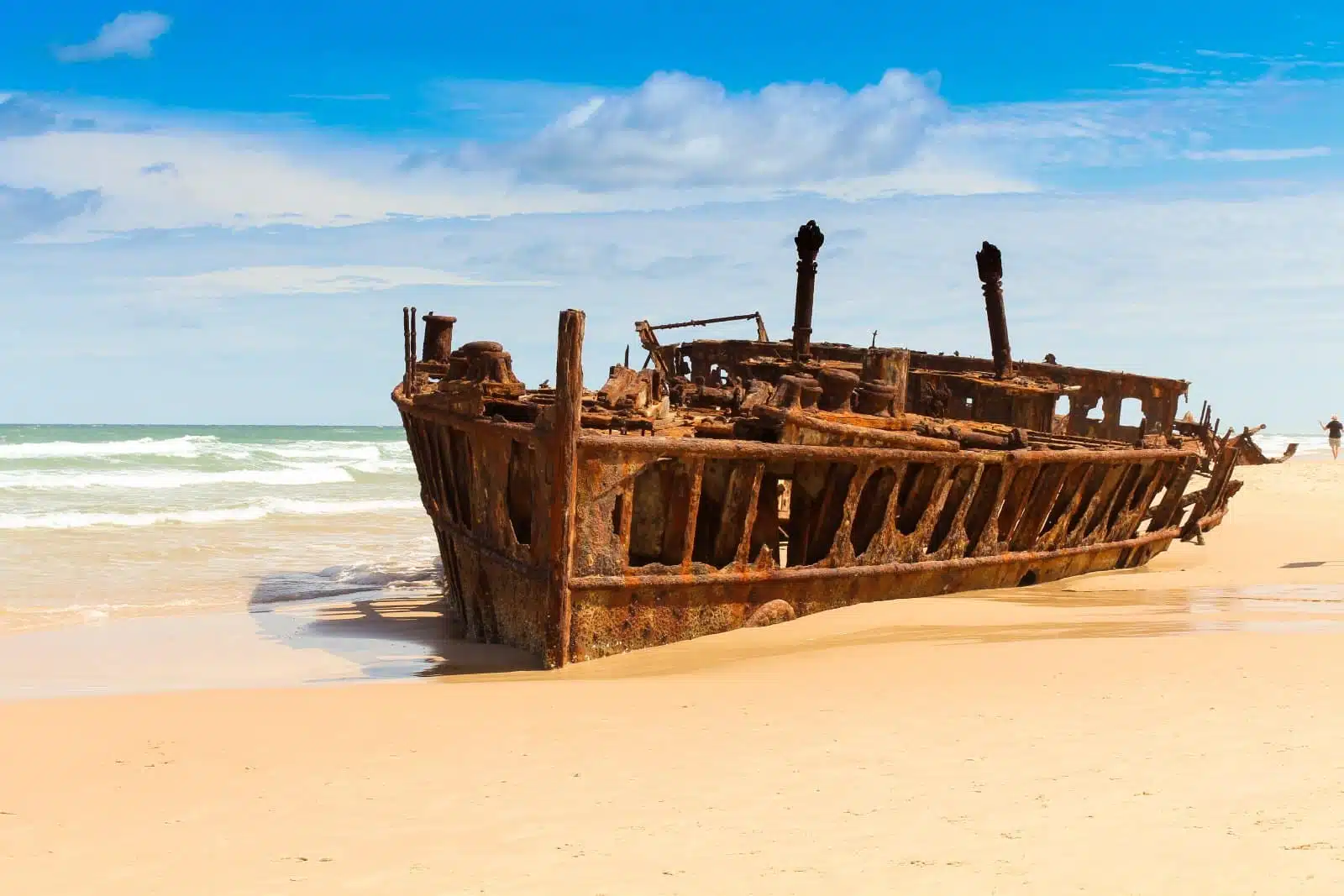
Image Credit: Shutterstock / Yannik Photography
Fraser Island (K’gari), a World Heritage-listed site, is the world’s largest sand island, offering an extraordinary mix of rainforests, sand dunes, freshwater lakes, and a 120-kilometer beach highway. The island is famous for its clear, freshwater lakes, including Lake McKenzie and Lake Wabby, and its ancient rainforests growing directly from the sand. Fraser Island is also a prime spot for observing dingoes in the wild, along with whales off the coast during the migration season.
Insider’s Tip: Exploring Fraser Island is best done by 4WD, either on a guided tour or by renting your own vehicle, allowing for the flexibility to discover the island’s remote spots at your own pace.
When to Travel: The cooler months from April to October offer comfortable conditions for exploring and camping on the island, with less humidity and fewer insects.
How to Get There: Fraser Island is accessible by ferry from Hervey Bay or Rainbow Beach. Hervey Bay Airport, with flights from Brisbane and Sydney, is the closest air gateway.
16. Rottnest Island, Western Australia
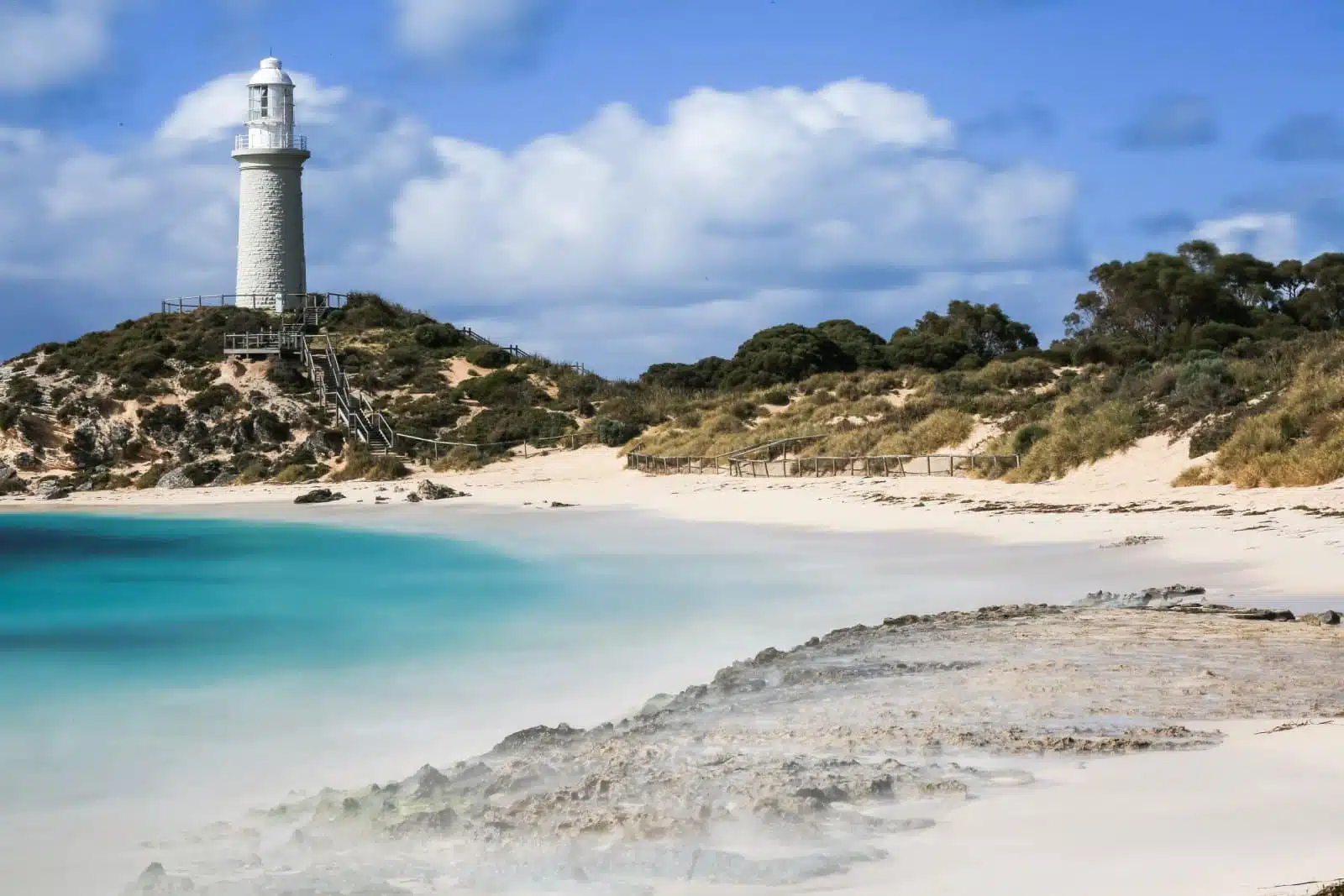
Image Credit: Shutterstock / Jesse Garcia
Just off the coast of Perth, Rottnest Island is a popular day-trip or short-stay destination, known for its crystal-clear waters, secluded beaches, and the friendly quokkas, small marsupials that have become social media stars. The island’s car-free policy makes it a haven for cycling, with numerous paths leading to historic sites, lighthouses, and stunning lookout points. Rottnest is also a fantastic location for snorkeling, diving, and surfing, with rich marine life and shipwrecks to explore.
Insider’s Tip: Take a selfie with a quokka, but remember to respect their space and natural behavior. Feeding or touching the quokkas is prohibited to protect their health.
When to Travel: Summer (December to February) is perfect for beach activities, but spring (September to November) and autumn (March to May) offer milder weather and fewer crowds.
How to Get There: Ferries to Rottnest Island depart from Perth, Fremantle, and Hillarys, making the island easily accessible for a day trip or longer stay.
The Bottom Line

Image Credit: Shutterstock / Benny Marty
Australia’s vastness and diversity offer endless possibilities for exploration, from its ancient landscapes and iconic natural wonders to its vibrant cities and quaint rural towns. Whether immersing yourself in the rich Indigenous cultures, embarking on outdoor adventures, or simply enjoying the laid-back lifestyle and stunning scenery, Australia promises a journey filled with memorable experiences. As you traverse this magnificent land, remember to travel responsibly, respecting the natural environments and local communities that make Australia truly unique. Your adventure Down Under awaits, inviting you to discover the beauty and spirit of Australia, from the Outback to the Great Barrier Reef and beyond.
More From The Green Voyage
Top 10 Trending Travel Destinations 2024
6 Essential Banking Apps for International Travel – Managing Your Finances on the Go
Traveling With Kids – 10 Tips to Create Memorable Family Holidays
The post A Country Guide to Australia 2024 – From the Outback to the Great Barrier Reef first appeared on The Green Voyage.
Featured Image Credit: Shutterstock / Andrew Atkinson.
For transparency, this content was partly developed with AI assistance and carefully curated by an experienced editor to be informative and ensure accuracy.
Tips for Trip Success
Book Your Flight
Find an inexpensive flight by using Kayak, a favorite of ours because it regularly returns less expensive flight options from a variety of airlines.
Book Your Hotel or Special Accommodation
We are big fans of Booking.com. We like their review system and photos. If we want to see more reviews and additional booking options, we go to Expedia.
You Need Travel Insurance!
Good travel insurance means having total peace of mind. Travel insurance protects you when your medical insurance often will not and better than what you get from your credit card. It will provide comprehensive coverage should you need medical treatment or return to the United States, compensation for trip interruption, baggage loss, and other situations.Find the Perfect Insurance Plan for Your Trip
